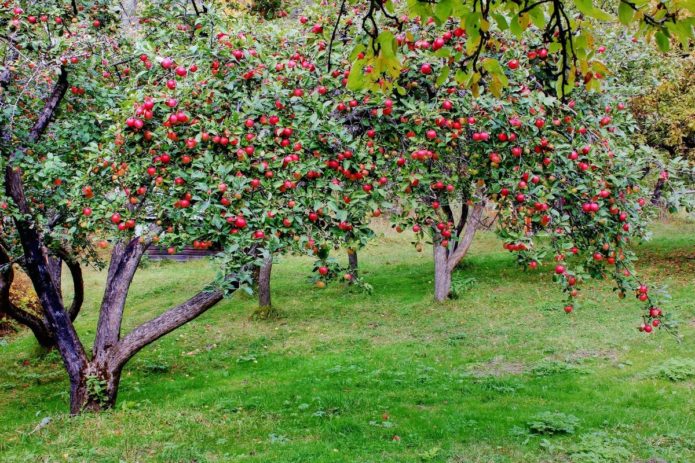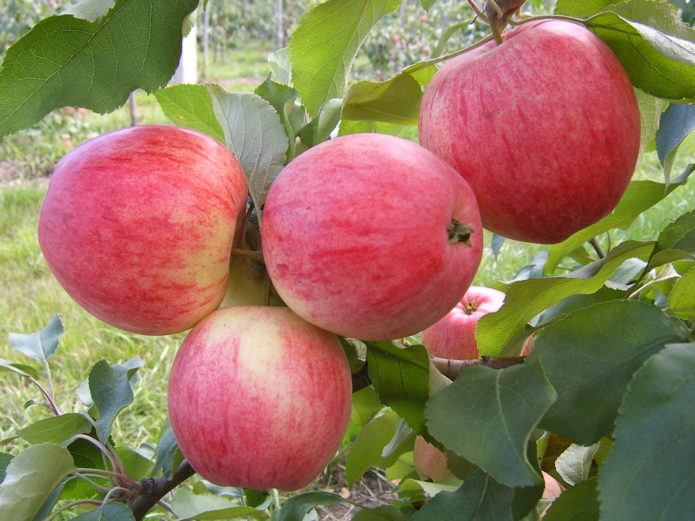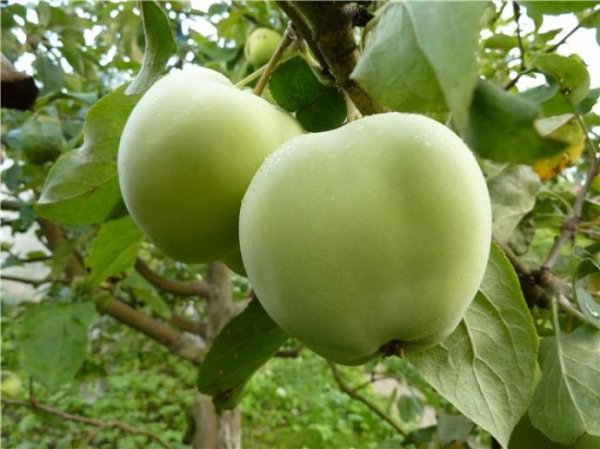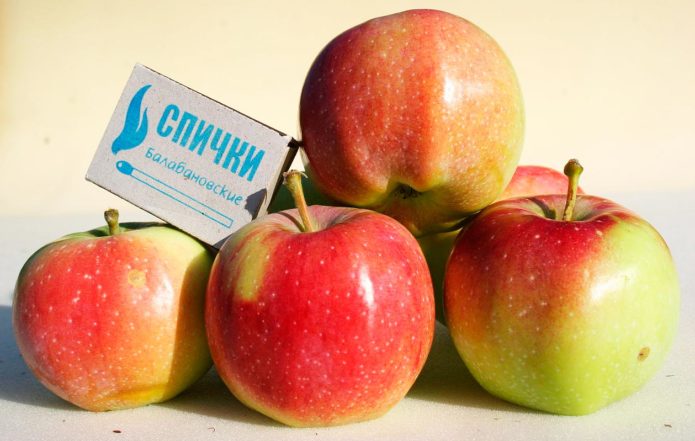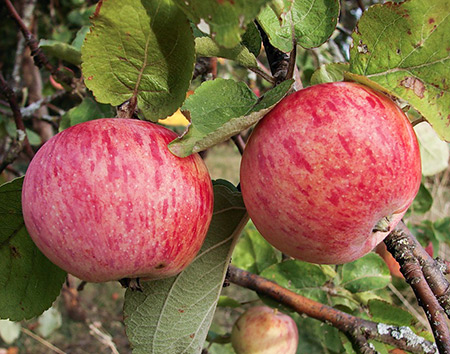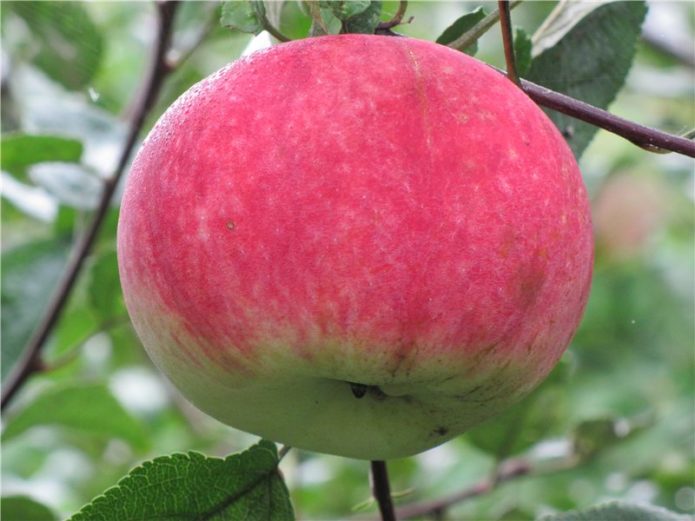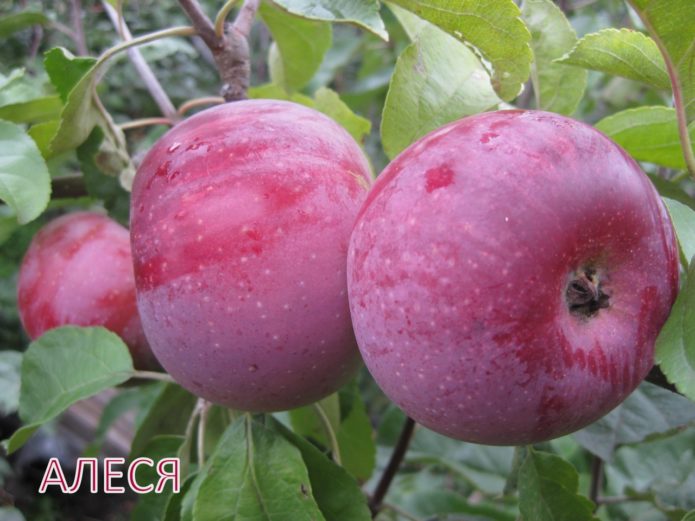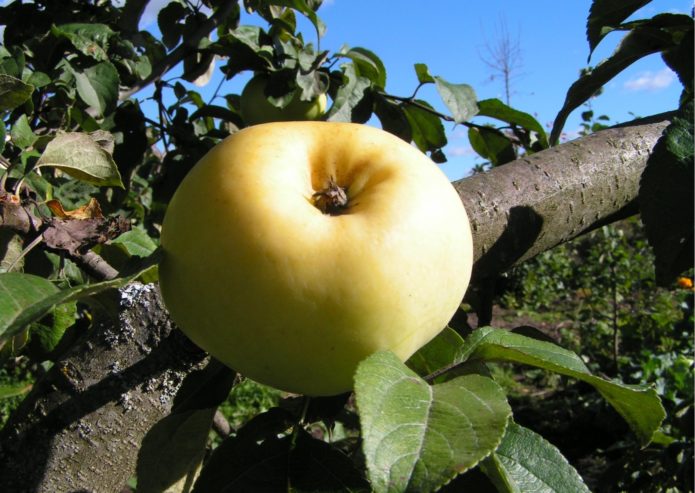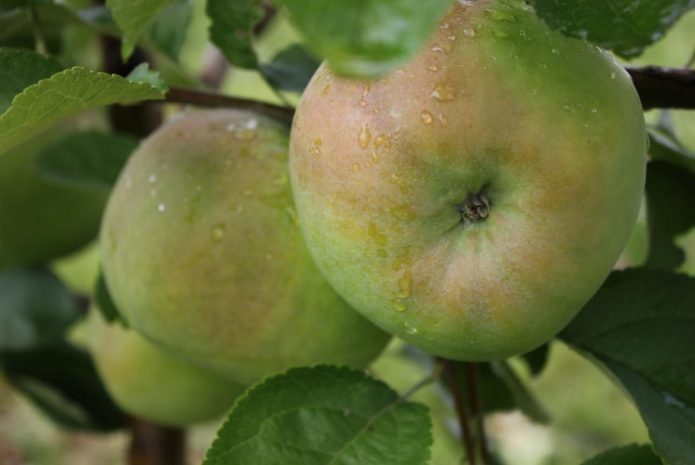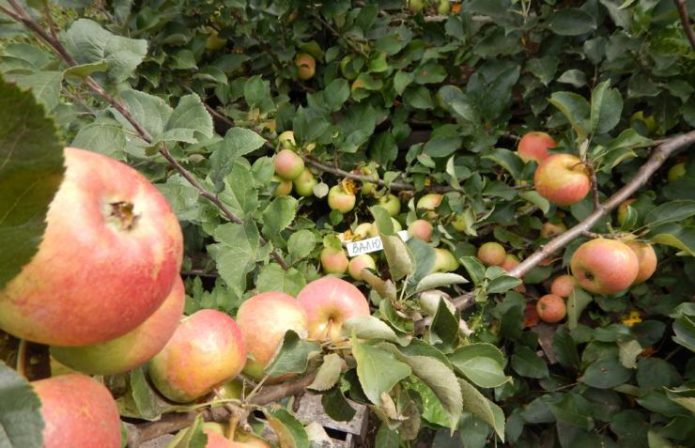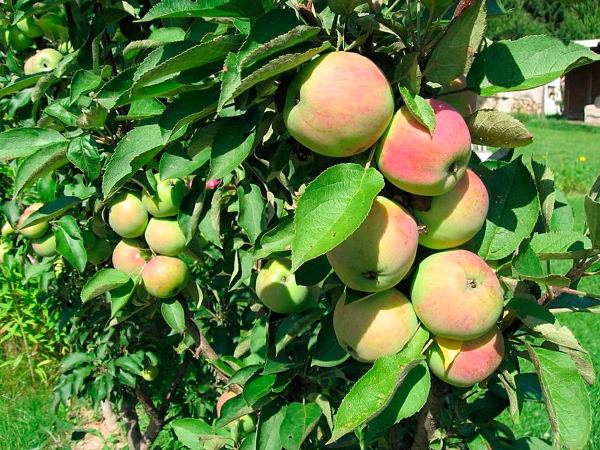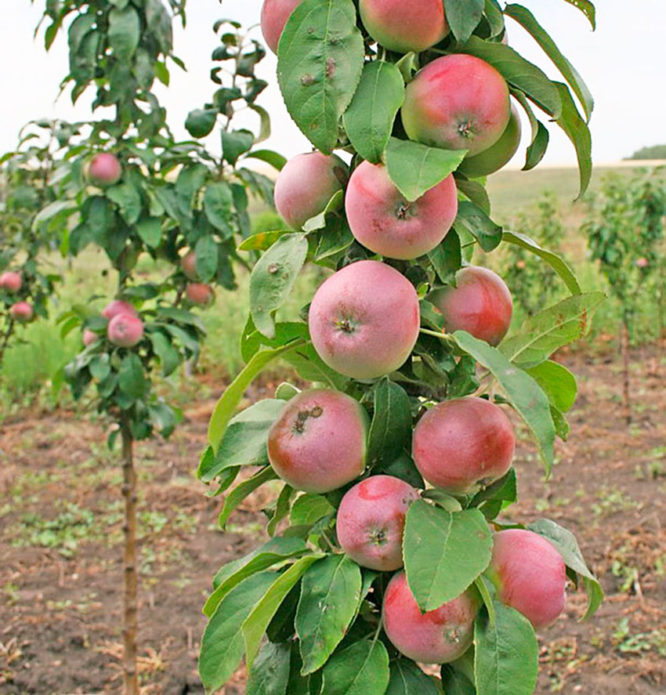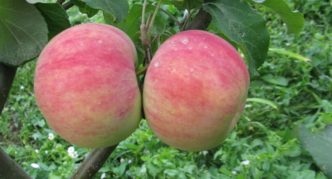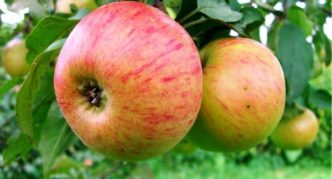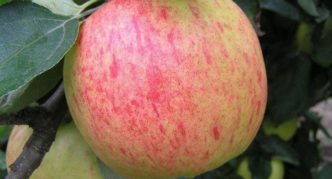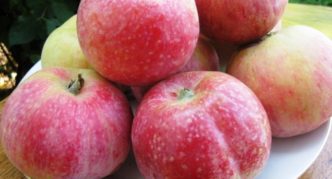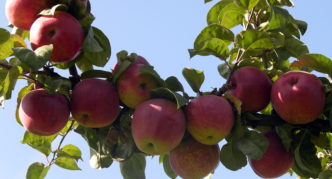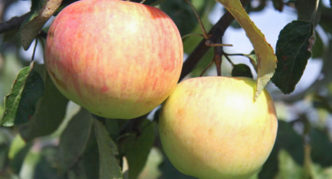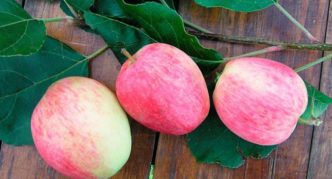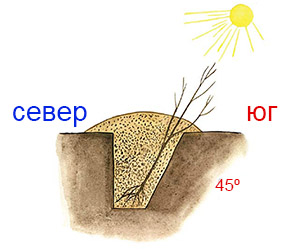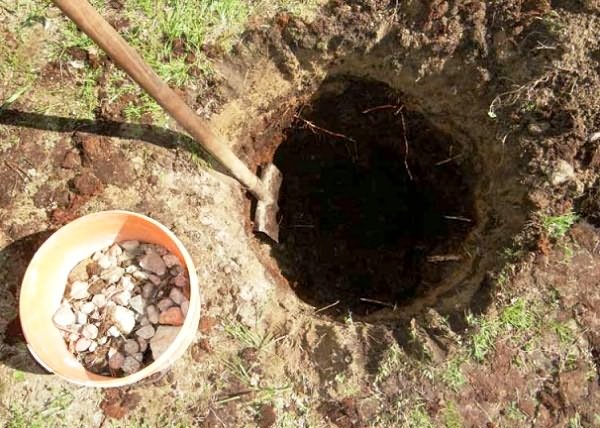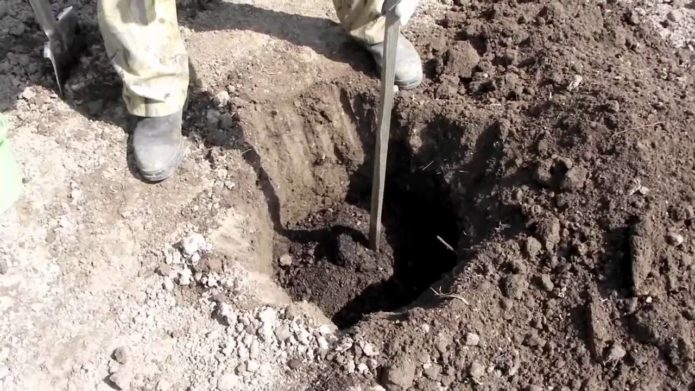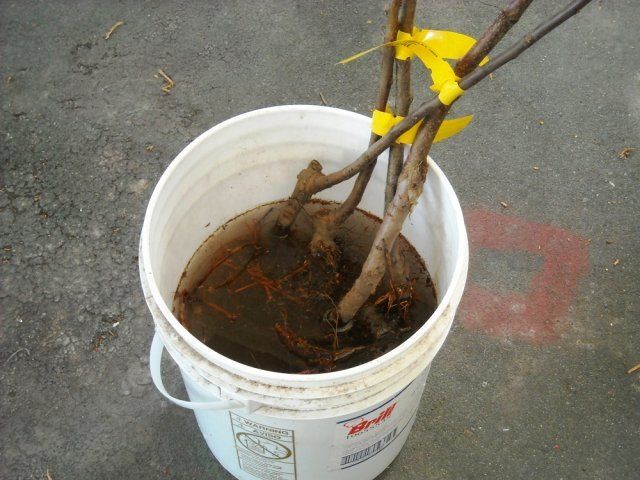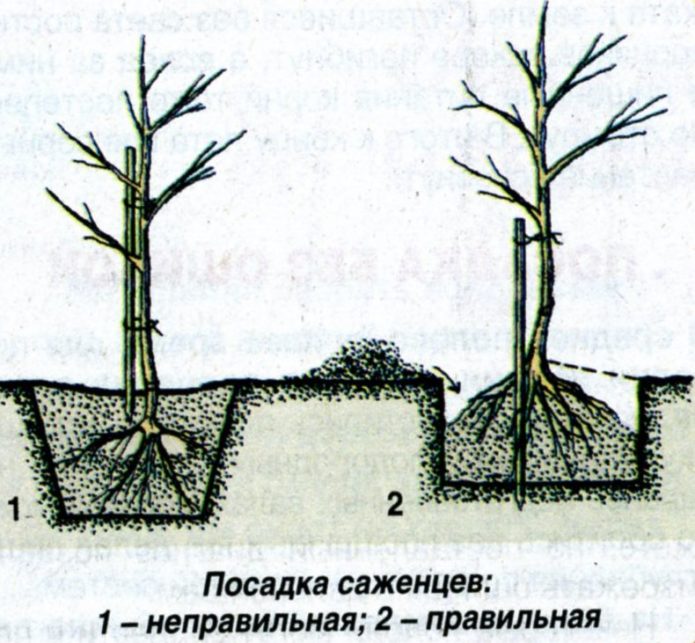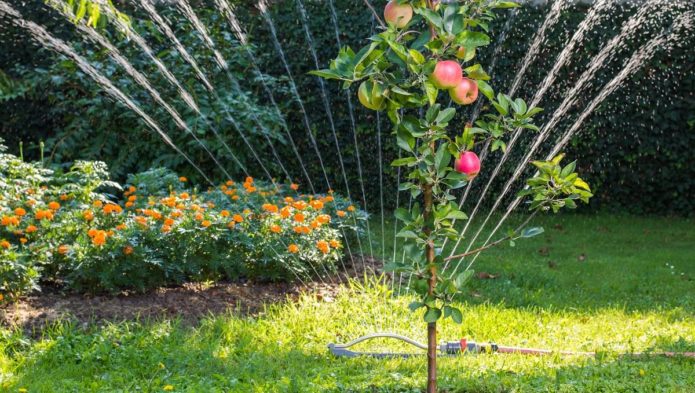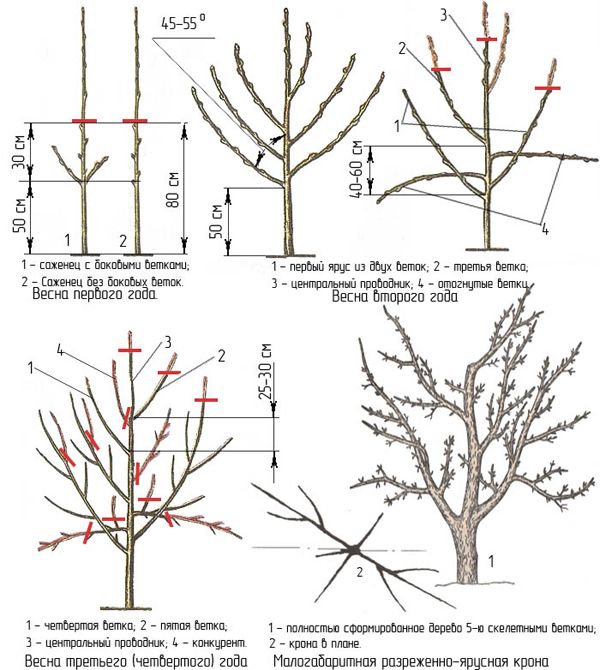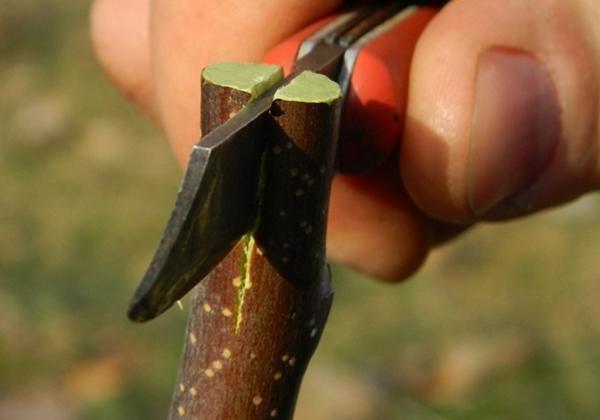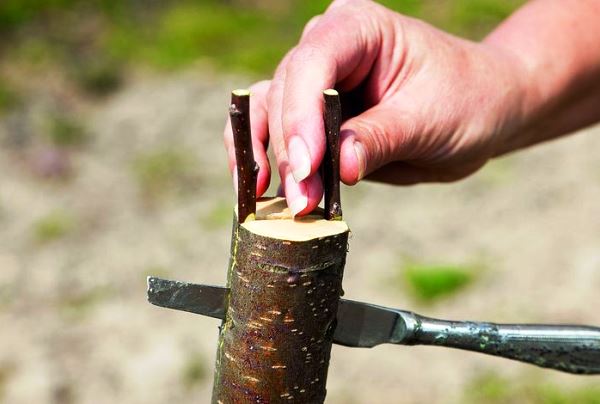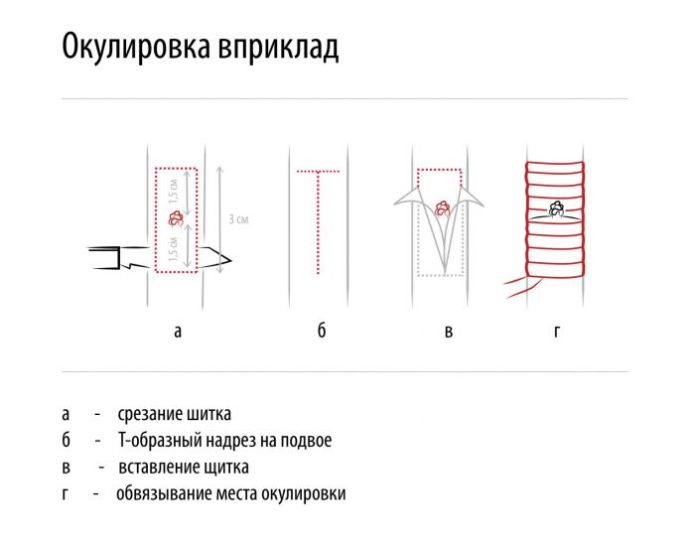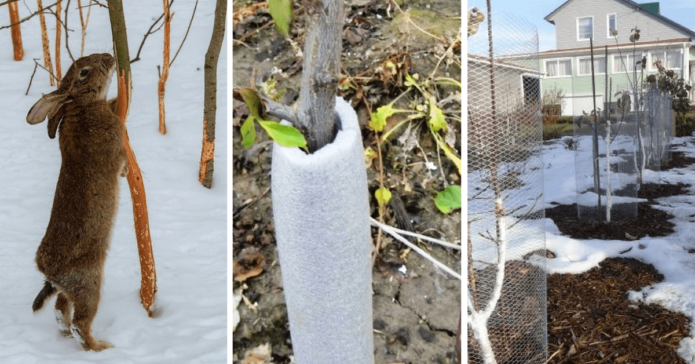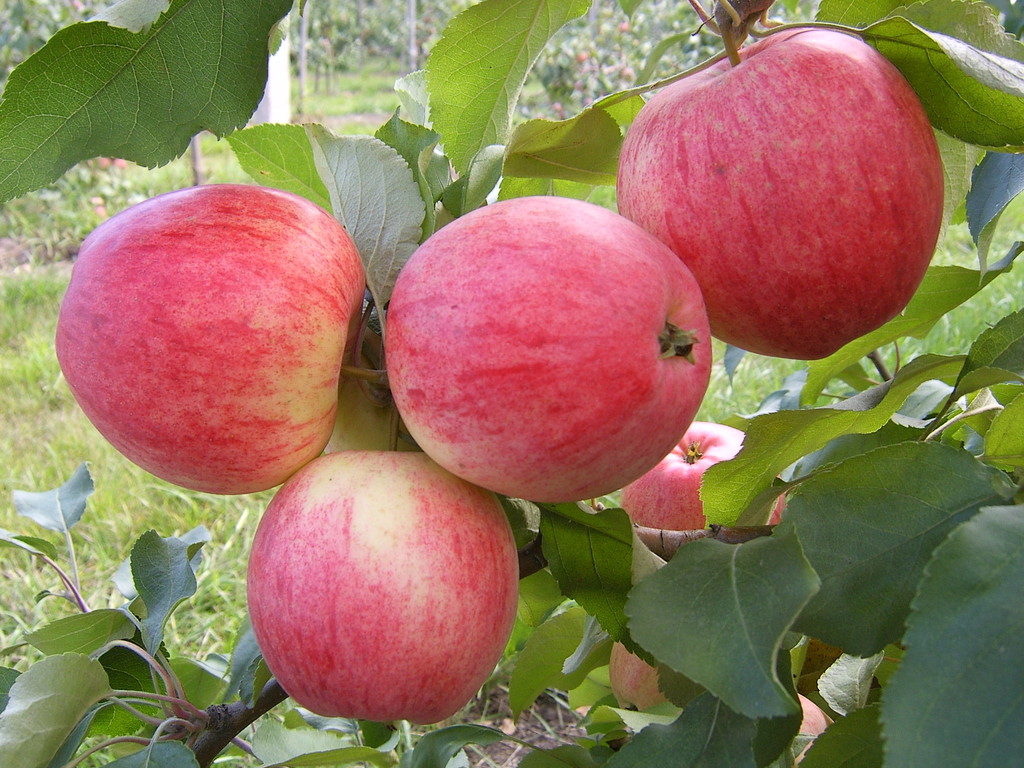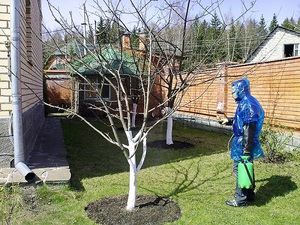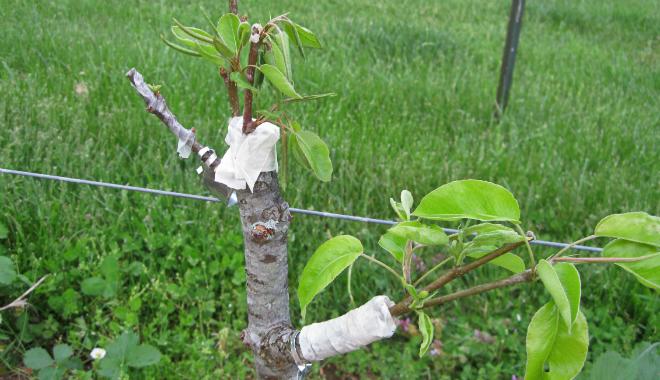The apple tree is considered one of the most unpretentious crops, which can be grown in almost any region of the country. And the Moscow region is a favorable place where, using standard agricultural techniques, it is possible and necessary to grow apple trees. Of course, it is necessary to purchase seedlings that are zoned in your region, otherwise the experiment may end in failure. For the Moscow region, you can pick up many varieties, from proven classics to novelties.
Content
Growing apple trees in the Moscow region
The Moscow region is one of the regions suitable for growing fruit trees, first of all, of course, apple trees. When choosing a variety, you can rely on many indicators. Often, amateur gardeners try to focus on taste. And among the varieties offered for the Moscow region, there is plenty to choose from. Someone likes sweet apples, someone prefers sweet and sour. Well, there are also fruit lovers with a predominance of sourness in taste. When choosing an apple tree suitable for the garden, first of all, you need to pay attention to the characteristics of the variety, its frost resistance and plasticity.
As a rule, all varieties are divided into groups that correspond to a particular period of fruit ripening. Based on this, 3 main groups can be distinguished:
- summer;
- autumn;
- winter.
Summer (early) varieties of apple trees for the Moscow region
The group of summer (early ripening) apple trees is represented by a large number of varieties, the fruits of which have a dessert purpose. They usually taste sweet and sour and sweet. In the climatic conditions of the Moscow region, varieties ripen in July-August... Apples are suitable for consumption immediately after being removed from the branch; it is recommended to harvest 3-4 days before full ripeness. The thing is that the fruits overripe very quickly, the pulp becomes friable and tasteless.
The shelf life of summer varieties is very short - only 30 days. If early apples are stored without oxygen, for example, in a tied plastic bag, then the decomposition of the pulp will come even faster. This is due to anaerobic respiration - a complex biochemical process, as a result of which alcohol accumulates in the apple cells and the pulp deteriorates faster. Early varieties are unsuitable for transportation over long distances.
Melba (Melba)
The old Canadian variety has taken root well in the Moscow region. Medium-sized plant with a raised and wide rounded crown. The fruits are medium- and large-sized - the usual apple weight is 120-140 g, but sometimes there are also 300-gram specimens. The pulp is white, medium density, fine-grained, juicy. The taste is sweet and sour, giving off a candy spice. The fruits are very aromatic. In mid-August, it is time to harvest. But if the summer is cold, then the collection of fruits can be delayed until mid-September. The shelf life of apples is 1 to 2 months.
Table: Pros and Cons of Melba
| pros | Minuses |
|
|
Folding
This variety is known under other names - Alabaster, Naliv White Pribaltiyskiy. It is considered a local Baltic, belongs to folk selection and has a long and glorious history.
The tree is medium-sized, with a wide, pyramid-like crown, which rounds out with age. The maximum weight of fruits is 150 g, but they are usually small - 80-100 g. The pulp is white, combines juiciness, fine grain and some looseness. Overripe fruits cannot be called tasty - the pulp becomes mealy, slightly dryish. But the taste of ripe fruits is unusually good - refreshing, sweet with sourness.
Table: pros and cons of Papirovka
| pros | Minuses |
|
|
Grushovka Moscow
The variety of folk selection is still popular. It is distinguished by a medium or vigorous tree, a wide pyramidal and spreading crown, which acquires a rounded shape with age.
The fruits are small - the weight of one apple ranges from 80 to 100 g. The pulp is white, sometimes it can have a creamy shade. The consistency is fine-grained, very loose, but juicy and tender. If the apple is not removed from the branch in time, the pulp becomes mealy and dry. The taste of ripe fruit is sweet and sour, but sourness may prevail. Grushovka Moscow's apples are very fragrant. They are not stored for long - less than a month.
Table: pros and cons of Grushovka Moscow
| pros | Minuses |
|
|
Autumn (medium ripening) apple trees for the Moscow region
A group of autumn, or medium-ripening, apple trees is intermediate between summer and winter varieties and is famous for the fruits of the dessert taste. Apples ripening in the fall are of universal use. They are tasty in their natural form and are recyclable. Fruits are larger than average. Their skins are usually brightly colored. The period of maturity falls in mid-August – first half of September. Full maturity of the fruit occurs 2 weeks after removal from the branch. The shelf life of autumn varieties is 2 times longer than summer varieties - apples will last perfectly until January.
Isaev's memory
The variety is named in honor of the scientist, author of numerous varieties of fruit crops, S.I. Isaev. A rounded crown and an average (up to 3.5 m) tree size is a typical apple tree appearance.
The fruits can be called large, their average weight is 160 g. The pulp has a pleasant sweet and sour taste, delicate, fine-grained, has a creamy hue. The aroma is poorly expressed. The tasting score is 4.4 points. The harvest ripens in mid-late September. The storage period is until January.
Table: pros and cons of the variety Pamyat Isaeva
| pros | Minuses |
| Low early maturity |
Autumn striped
An old Baltic variety obtained by natural pollination. According to L.P.Simirenko, the apple tree comes from Holland. The variety is also known under other names:
- Autumn strafling;
- Autumn striped striped;
- Starostino;
- Obrezkovo.
The appearance of the plant is impressive - the height of the tree is up to 8 m, the crown is raised and rounded. The usual weight of apples is above average - the weight can vary from 100 to 175 g, sometimes up to 200 g. The flesh of the fruit is yellowish, but often has a pink tint under the skin, dense in consistency, but tender and juicy. The taste is harmonious, sweet and sour and with a pleasant wine flavor. The period of fruit ripeness is in early September. Apples can be stored in the refrigerator for up to 3 months.
Table: pros and cons of Autumn striped
| pros | Minuses |
|
|
Young Naturalist
Created in 1935 by domestic breeders. The variety is recommended for industrial cultivation. The appearance of the tree is notable for its small size - only 3-4 m in height. The apple tree is of the semi-dwarf type. The crown is dense, flat-round, drooping.
The mass of one apple is from 100 to 130 g. The flesh is creamy, tender and juicy, fine-grained is felt. Dessert taste, sweet and sour. Apples can be harvested in the 20th of September, but they reach consumer ripeness in early October. The fruits can be stored for up to 2 months.
Table: pros and cons of the Young Naturalist variety
| pros | Minuses |
|
|
Winter (late) varieties of apple trees for the Moscow region
The ripening period of winter, or late, apple varieties occurs in late September and early October. These fruits are the source of vitamins in the winter. The shelf life of such apples is very good - from 4 to 8 months. Winter varieties have one feature. An apple plucked from a branch is very hard, and the taste is not fully revealed. Ripening and acquisition of a real bright taste occurs during storage. Within a month, amazing biochemical processes take place in apples - the level of tannins decreases, and the level of sugars and pectins increases, the maximum amount of coloring and aromatic substances accumulates in the skin.
Winter varieties are not grown in cold regions. This is due to the fact that the harvest is taken late, which is why the tree does not have time to prepare for the winter period. But for the south and the Moscow region, these apple trees are suitable.
Alesya
For a variety with such a wonderful name, let's say thanks to the Belarusian scientists. Thanks to them, a low tree (up to 4 m) was born, the side branches of which with foliage form a beautiful rounded crown.
Tasters rate the sweet and sour taste of the fruit at 4.3 points. Apples grow rather big - the average weight of flat-round fruits is up to 150 g. White crunchy flesh is hidden under the glossy skin. Late September – early October is the period when the harvest of aromatic apples begins. But before their taste is fully revealed, it will take a long time. Only in December will the variety reach flavoring conditions. The fruit has a long shelf life - until April. The Alesya variety is popular in industrial and private gardens.
Table: pros and cons of the Alesya variety
| pros | Minuses |
| No shortcomings identified |
Antonovka ordinary
Antonovka is perhaps a classic of winter varieties. Refers to folk selection. The tree is vigorous, with a raised, irregularly rounded crown, which becomes spreading with age.
Medium-sized fruits - 120-150 g, maximum weight - 300 g. Juicy yellowish pulp is dense in consistency and with slight graininess. The taste is good, refreshing, although a slight excess of acid may be felt, which indicates a high content of vitamin C. The ripeness begins in mid-September. The harvest is stored for 2-3 months.
Table: pros and cons of Antonovka ordinary
| pros | Minuses |
|
|
Bryansk golden
Domestic variety. The apple tree is beautiful, well-formed, has an average growth rate and size. The rounded crown is covered with dense foliage.
Fruits are medium-sized, large in size - from 180 to 250 g. The juicy pulp is colored white and has a fine-grained consistency. The variety favorably differs in taste - the main sour-sweet notes are emphasized by a light spicy aftertaste. Tasting taste score is very high - from 4.7 to 5 points. The aroma is not pronounced. The harvest ripens in the last days of September.
Table: pros and cons of the Bryanskoe golden variety
| pros | Minuses |
|
|
Columnar apple trees for the Moscow region
These varieties are very interesting as they are a great option for small gardens. Columnar apple trees begin to bear fruit very quickly, and regardless of the rootstock. Trees have a maximum height of 3 m, and their crown width reaches only 0.5 m.The columnar varieties can have different heights, therefore they are divided into:
- dwarf;
- semi-dwarf;
- vigorous.
Among them are apple trees of summer ripening, autumn and winter. Among the varieties that have perfectly proven themselves in the conditions of the Moscow region, there are both novelties and those that have already been tested by time.
Currency
Differs in compact dimensions - height from 2 to 3 m, width only 20 cm. The variety is close to dwarf species.
Correct rounded-conical fruits are rather weighty - 130–240 g. Sweet, but with a slight sourness, the pulp has a white color, medium density, juicy fine-grained consistency. The aroma is pronounced. Belongs to late (winter) varieties, ripeness occurs in the first decade of October. Shelf life - until mid-February.
Table: pros and cons of the Currency variety
| pros | Minuses |
|
|
The president
This apple tree is rightfully called one of the main achievements of domestic breeding. Refers to semi-dwarf species. The tree is of medium size and grows quickly. Powerful, compact growing shoots form a dense crown.
The modest dimensions of the tree do not prevent it from bearing large and one-dimensional fruits - 140-250 g, but there are also larger ones - up to 310 g. The pulp is white, very juicy. The consistency is fine-grained, of medium density. The taste is good, sweet and sour, the aroma is poorly expressed. The harvest period falls in the second decade of September. Subject to storage standards, the fruits will last until the end of December.
Table: pros and cons of the President variety
| pros | Minuses |
|
|
Triumph
External data of the plant - medium size, narrow pyramidal, medium thickened crown. Average growth rate.
Apples of medium one-dimensionality and size. The usual fruit weight is 120 g. The creamy pulp is very juicy, combining equally sweet and sour notes. Assessment of tasters - 4.6 points. The fruit has a fine-grained, dense and slightly prickly texture. Removable ripeness falls in mid-September. The shelf life is not good enough - about 1 month.
Table: pros and cons of the Triumph variety
| pros | Minuses |
| Winter hardiness at the Melba level |
Sweet varieties of apple trees for the Moscow region
For lovers of sweet apples, the following varieties can be advised:
- Lungwort;
- Winter lungwort;
- Dessert Isaeva;
- Candy;
- Apple Spas.
Table: characteristics of sweet varieties of apple trees
| Variety name | Fruit size | Winter hardiness | Disease resistance |
| Lungwort | 100-150 g | Above average | Scab and fruit rot resistant |
| Winter lungwort | 100-120 g | High | Scab resistant |
| Dessert Isaeva | 120-130 g | Average | Scab resistant |
| Candy | 80-120 g | High | Weak |
| Apple saved | 214 g | High | Resistant to scab and other diseases |
Photo gallery: sweet varieties of apple trees
- Apple-tree Dessertnoe Isaeva gives a harvest of sweet fruits
- Medunitsa is also grown in the Moscow region
- Apple spas has a sweet taste
- Apple-tree Candy - a tree for lovers of juicy and sweet fruits
New varieties of apple trees for the Moscow region
Scientists-breeders continue to delight with new apple varieties.
Table: characteristics of new varieties
| Name varieties | The power of growth | The quantity fruit | Flavoring quality fruit | Yield | Frost resistance | Resistance to diseases and pests | Drought tolerance | Maturation type |
| Arkadik | A big tree with fast growth | 120-340 g | Sweet and sour fragrant | 305 c / ha | Frosts in Moscow region and Non-black earth withstands well | High stability to the scab | Average | Early summer |
| Marat Busurin | Medium | 108 g | Sweet and sour dessert taste | 176 c / ha | Good, even north of Moscow | Scab resistant in small gardens in industrial processing required | Average | Early winter |
| Present Grafsky | Fast growing and great wood | 140 g | Sweet and sour | 200 c / ha | High, up to -42aboutFROM | Good immunity to disease and pests, resistant to the scab | Average | Late winter |
Photo gallery: new varieties of apple trees for the Moscow region
- Apple tree Marat Busurin belongs to the early winter
- Variety Gift to Grafsky is a fast-growing tree
- Arkadik variety is highly resistant to scab
Planting apple trees in the suburbs
Planting seedlings has its own characteristics, which determine the survival rate of the tree and its ability to bear fruit in due time.
Boarding time
You can plant apple seedlings in the Moscow region in autumn and spring. Each of these periods has both its pros and cons.
Autumn
This time of the year is abundant in precipitation, which contributes to the quickest rooting of the young tree. Planting in the Moscow region is carried out from mid-September to mid-or late October, depending on the temperature. For the growth of new roots, daytime indicators of the thermometer should be at + 10 ° С, and nighttime - + 5 ° С. It will take 2-3 weeks for the tree to settle down in a new place.
If you purchased a seedling, but did not manage to plant it before the onset of frost, do not be discouraged. The planting material overwinters safely in the ditch. For this:
- Dig a groove up to 50 cm deep and place the seedling in it at an inclination of 45 °, pointing its top to the south.
- Cover the roots of the tree and part of the trunk with earth, water well so that the water helps the soil to fill all the voids in the roots.
- When the soil settles, add more soil until a small mound forms.
- Such a structure does not need additional shelter, but if the winter is frosty and snowless, you can cover the hole with spruce branches or peat.
If foliage remains on the seedlings prepared for the digging, it should be removed so that moisture does not evaporate.
Spring
In the spring, with a landing in the Moscow region, you need to hurry. It is best to plant seedlings that have not yet begun to blossom. Still, you should wait until the snow melts, the soil warms up, but remains moist enough. Usually, spring planting in the Moscow region is carried out from mid-April to the first decade of May.
Preparatory work
In whatever period you carry out planting work, always prepare the pit for planting in advance. For the spring procedure, preparatory work is carried out in the fall, and for the fall procedure, about a month before the scheduled work.
Choose a site that is as illuminated as possible, well closed from the winds prevailing in the winter in the Moscow region.The culture, famous for its unpretentiousness, still prefers loams with an 18-centimeter humus horizon.
Features of choosing a landing site:
- if your site is located in flooded hollows, then you need to plant an apple tree on artificial hills;
- diverter grooves can be built to drain the wetland;
- the subsoil water level should not be closer than 1.5–2 m to the soil surface.
If the apple tree is self-fertile or partially self-fertile, you need to have 2-3 pollinating trees in the garden, which will help to form a high-quality harvest.
The planting pit should have the following dimensions:
- depth about 80 cm;
- width - at least 60 cm.
If the soil on your site is unsuitable for growing an apple tree (heavy clay or sandy), the hole must be larger than the specified dimensions so that it can be filled with a soil mixture useful for the normal development of the seedling.
The procedure for preparing the pit:
- The owners of the clay area lay a drainage layer (broken brick, large pebbles) on the bottom of the pit.
- Prepare soil mixture for the pit from:
- fertile soil;
- 2-3 buckets of well-rotted humus;
- 1.5 tbsp. l. superphosphate;
- 1 tbsp. l. potassium salt.
- A stake is driven into the solid bottom of the pit, which should be 1 m above the planting level. It will serve as a support for the seedling, and at the initial stage will play the role of a guide.
- The filled earth is poured into a pit and poured with water. A couple of buckets will be enough for the soil to settle. Before planting, useful elements mixed with the ground will dissolve and will not harm the root system.
Planting an apple tree
Landing procedure:
- If the roots of the seedling are dry, revive them by soaking in water for a day.
- Remove some of the soil from the hole so that the root system can freely fit there.
- Collect the remaining soil mixture with a slide at the bottom of the pit.
- Place a seedling on the top of the hill, spreading the roots along the slopes.
- Holding the tree with your hand by the trunk, pour the extracted soil mixture back into the hole. The root collar should be 5-7 cm above the planting level.
- After filling the hole, tamp the soil lightly so that the seedling sits firmly in the ground. Tie it to a support.
- Design a watering circle by building a soil rim around the pit.
- Pour 2 buckets of water, pouring them one by one. If after watering the soil has settled heavily and the roots are bare, add more soil.
- Mulch the surface.
Landing scheme
Of no small importance is such a factor as the distance of apple seedlings from each other and from other trees. If the plantings are thickened, young trees will constantly lack food, moisture and sunlight. As a result, their growth will be slowed down, they will not be in a hurry to enter the fruiting season.
The normal planting scheme, which allows apple seedlings not to compete with other crops, but to develop at a rapid pace, consists in the following indicators:
- between trees 3–3.5 m;
- row spacing - 6–6.5 m.
Columnar varieties are an exception. Their miniature crowns help to save a lot of space as the spacing between trees and the row spacings are significantly reduced. It is enough to leave up to 50 cm between the seedlings of columnar varieties, and up to 1 m between rows.
Video: planting columnar apple trees
Apple tree care in the Moscow region
Proper care helps to form a healthy plant, which will reward the caring gardener with an excellent harvest.
Watering
The seedling, especially planted in the spring in the suburbs, requires frequent watering. 3-4 procedures per month, depending on the weather and quality of the soil - this rate is kept until the seedling begins to actively grow foliage and shoots.Successful rooting cuts watering frequency in half. Both during and after rooting, the seedling requires from 1 to 3 (if the soil is sandy) buckets of water in one procedure. Loosening and mulching the tree circle will help prevent moisture evaporation.
For a fruit-bearing tree, it is important to water only 4 times during the growing season:
- at the very beginning of blooming flower buds or immediately after flowering;
- when the excess ovary begins to fall;
- during the active formation of fruits;
- if autumn is dry, then in October, on the eve of frosts, pre-winter watering should be carried out.
The water norm for an adult tree is 60 liters. On sandy soils, this rate increases, on clay soils, it decreases.
Helpful hints:
- Remember to loosen the soil under the tree after watering or rain to restore aeration in the roots.
- If the summer period is hot, which happens in the Moscow region, once a week in the evening it is useful to wash the crown of the apple tree with sprinkling. This will cleanse the foliage of dust and pests and normalize the process of photosynthesis.
- A columnar apple tree with a more fibrous superficial root system needs to be moistened more often.
Fertilization
Saplings need nutrients for rapid formation. An adult fruiting apple tree, receiving the necessary feeding, brings a large and high-quality harvest.
Fertilization procedure:
- In early spring, fertilizing with nitrogen-containing fertilizers is carried out in order to activate the growing season. For an apple tree, one of the food elements is used, which is scattered around the perimeter of the crown:
- urea - 0.6 kg;
- ammonium nitrate - 40 g;
- rotted manure - 3-4 buckets.
- In the summer, you can use chicken manure diluted with water in a ratio of 1/20, or prepare the following solution for feeding - stir 100 g of superphosphate and 70 g of potassium sulfate in 10 liters of water.
- In the fall, eliminate any nitrogen-containing fertilizers. To prepare for the winter, an apple tree will need phosphorus-potassium dressing - 1 tbsp for 10 liters of water. l. potassium sulfate and 2 tbsp. l. superphosphate.
To prevent the development of chlorosis, you can spray the crown of the apple tree after leaf fall or in early spring with a solution of ferrous sulfate - 1 tbsp for 10 liters of water. l. drug.
Pruning
This important procedure helps to properly form the crown of the apple tree, which will make it easy to care for the plant, reduce the risk of diseases and pests, and also contribute to the formation of a better harvest.
The crown formation process begins after planting and is as follows:
- In the spring, an annual tree is crowned (cut off the central shoot) at a height of 80 cm.
- At a distance of 50 cm from the soil surface, a stem is formed, that is, all shoots are removed in this area. From the remaining buds, shoots will develop during this growing season.
- In the second year, the 3 most developed shoots are chosen, growing through one bud. Shorten them at the same level (about 1/3). This will be the first tier. The central conductor is cut so that it rises 15–20 cm above the branches of the first tier. The remaining shoots are cut into a ring.
- In the third spring, a second tier is formed in a similar way, in which up to 2 branches are left, growing 50 cm higher than the first skeletal ones.
- At the beginning of the next season, another layer is laid.
After the crown is finally formed, be sure to carry out thinning pruning, which will free the apple tree from excessive thickening, improve lighting and airing of the crown. In fast-growing varieties, spring thinning is carried out annually. On apple trees of medium vigor, the procedure can be performed after 1-2 years.
Sanitary pruning is done as needed. During it, remove diseased, broken, dried out branches. The rejuvenating procedure is carried out only for the old apple tree, the yield and growth activity of which have declined.
If the tree is neglected, pruning has not been performed for a long time, then it is impossible to carry out all types of work on it in one period - this is too much load. First, they carry out sanitary pruning. And next season you can start rejuvenating the apple tree.
Video: how to rejuvenate an old apple tree
Graft
Vaccination is a very useful procedure. She will help:
- significantly reduce the cost of purchasing the desired variety;
- grow different varieties in a small area;
- extend the life of your favorite variety.
Vaccination is a responsible business, which can be safely compared to a surgical operation, since some techniques are only possible for experienced gardeners.
Cleft grafting
This method is the simplest, therefore it is very popular. You can choose the rootstock and scion of the same thickness, or graft thin cuttings onto a thick branch.
Procedure:
- The selected branch is cut at the desired height, the surface is cleaned with a knife.
- With the help of a sharpened knife, a split is made exactly in the middle of the cut. The depth of the split depends on the thickness of the branch.
- The prepared graft is inserted into the split so that the cambium layers are combined.
- The open place of the scion is covered with garden varnish, and the upper part of the rootstock is tightly wrapped with a special tape.
Video: grafting an apple tree into a split
Budgeting in the butt
The procedure should be carried out in the summer. Procedure for budding in stock:
- Remove dirt from the stem of the rootstock. Use a sharp knife to make a T-cut in the bark to expose the cambial layer.
- Cut off the one-year growth, remove all leaves from it, but leave the petioles.
- Using a knife, cut off the ready-to-grow bud along with a piece of bark.
- Then carefully insert the kidney into the incision and wrap it tightly with the budding tape.
Video: budding an apple tree in stock
Winter protection
In the conditions of the Moscow region, you should definitely take care of young apple trees before the onset of winter. The trunk circle is covered with a thick (at least 20 cm) layer of mulch.
Peat will serve as an excellent insulation. Mice can start in the straw, and the foliage is heavily caked and underwhelmed.
The trunk of a young tree is insulated with any breathable material (old nylon tights, thick paper, cardboard). If the winter is snowy, then do not be lazy to collect a snowdrift around the apple tree. It is an excellent natural protection for wood in cold weather.
An adult apple tree is quite capable of overwintering only with a warmed root zone. The exception is difficult weather conditions, when the onset of a thaw is abruptly replaced by frost. Such differences can cause frostbites, so the trunk will need to be insulated.
And don't forget about rodents. They are becoming a big threat to trees of all ages. The absence of bark makes the apple tree defenseless from external influences. To prevent this from happening, tie the trunk with spruce branches, securing them with needles down. Or fence with a fine mesh.
Reviews about growing apple trees in the Moscow region
From summer apple trees delicious Candy and Melba (ripens at the end of August), from autumn, I think, we cannot do without Antonovka. In the first years after planting, the Chinese woman was larger (with a large plum), after 5 years it began to shrink (now about 2–3 cm in diameter), I don't know what is the reason.
In the Moscow region, the flowering of common apple varieties occurs approximately in one interval and intersects with each other, for this reason, the pollen of only triploid varieties has a very low, so to speak, "pollinating ability" (there are few such varieties). And the apple tree is insect pollinated, and due to the totality of problems with its pollination, it does not arise if some apple trees grow in the district.
At our dacha Antonovka is growing. Good apples, we love them very much.
Last year, 20 seedlings of columnar apple trees were planted at intervals of 50 cm for decorative purposes to separate the bench area from the vegetable garden and neighbors. We dream of getting a blooming wall in spring, and an apple wall in autumn. The size of the harvest from columnar apple trees is not very important, since there are several large adult apple trees on the site. As I understood after studying the topic on the Internet, success in growing columnar apple trees in the Moscow region is possible only with the "right" seedlings. We chose frost-resistant varieties (Vasyugan, Moscow necklace, Currency, President) produced by the Experimental Breeding Nursery. If they survive this winter, then, I hope, they will be healthy and even more so.
Growing a tree that is useful and decorating a garden in the Moscow region is easy. It is worth starting with the correct selection of the variety. And by observing some simple rules, you will help the seedling quickly develop into a healthy and productive tree.
